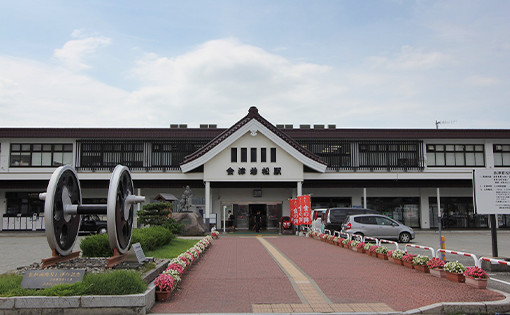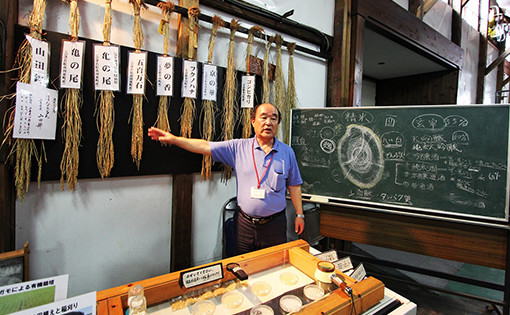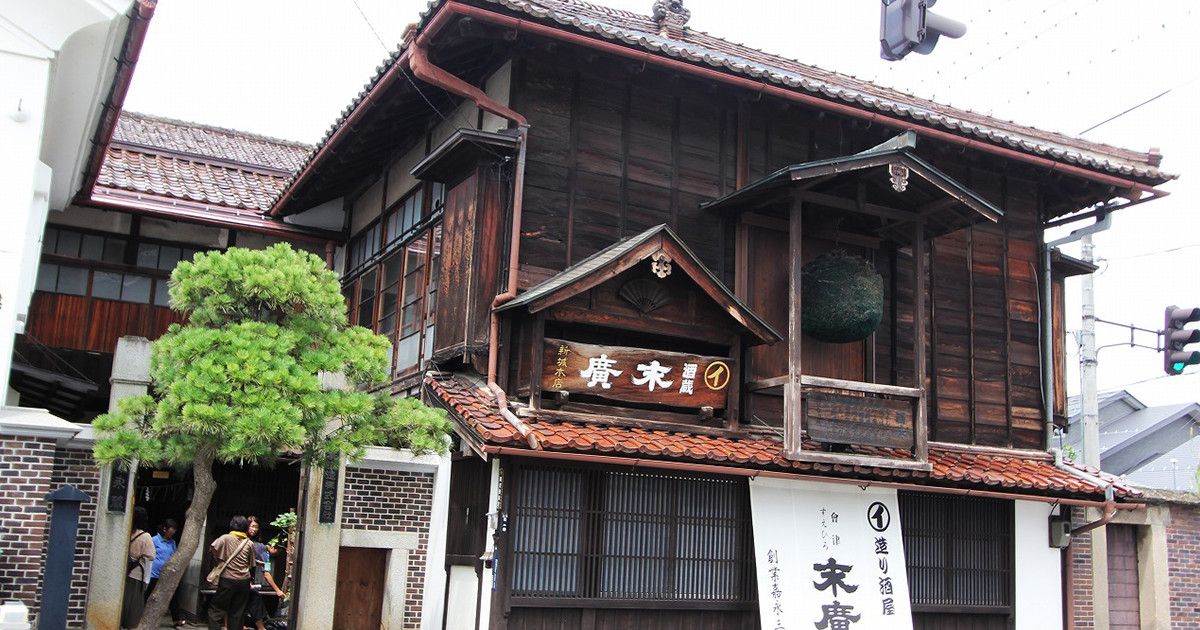Touring 165 years of tradition at
sake brewery Suehiro Shuzo
Sake Competition is an event that began with the idea of: “proposing new criteria, without regard to brands, for consumers to encounter truly outstanding sake.”
https://sakecompetition.com/
The event, now in its sixth year, drew a total of 1730 sake entries from 453 brewers for its 2017 edition.
The sake entries were separated into categories by variety and assessed by a panel of judges from all over the world in May 2017.
For the fifth year running, Fukushima Prefecture took more first place prizes than anywhere else in Japan.
After learning Suehiro Shuzo, in Aizuwakamatsu, Fukushima, took the top prize in the Junmai Daiginjo category, I went to visit Kaeigura, Suehiro Shuzo’s sake brewery with 165 years of tradition.
Aizuwakamatsu Station opened in 1899, which lends it an impressive historical air.
From the station, Suehiro Shuzo’s Kaeigura is an approximate 7-minute ride on the city’s loop-line bus.
There’s a bus stop right outside the brewery.
Besides Kaeigura, which has been handed down through the generations for over a century, Suehiro Shuzo also has a plant fitted with modern equipment about 10km away from here.
But to truly savor the brewery’s history and tradition, as well as its tasting-inclusive tours, I recommend visiting Kaeigura.
It’s late morning on a Monday and there is no shortage of visitors.
At the entrance hangs a sakabayashi, a round symbol that has been hung outside sake breweries since the olden days.
When new sake was made, green cedar leaves were shaped into a ball and hung out front. Around the time the leaves have dried and turned brown, the sakabayashi portends that the sake had matured and was perfect for drinking.

Here at Kaeigura, artisans have endured both pain and joy over the past century-plus crafting sake to make people say, “Wow, this is good!” after their first sip.
Heading in, there are sake barrels at the entrance...towards the back and up the staircase to the second floor is the room where the head of the brewery stayed.
The room has been preserved as-is, and is now shown as part of the tour.
Shoji, the brewery manager, provided the explanations.
“Junmai Daiginjo”...now that you mention it, that’s the sake my husband often asks me to buy.
Nothing but well-polished rice is used. A high-class sake made from only pure rice: “Daiginjo.” This sake is, of course, also crafted from rice, but alcohol is added in order to boost the rich flavor of this high-class sake.
My husband is no expert, but no matter where the sake is from, he insists that the hallmark of Junmai Daiginjo is its fruity aroma and always buys this particular variety.
A sake from Suehiro Shuzo took top prize in the Junmai Daiginjo category at Sake Competition 2017, making it the best-tasting sake as selected by consumers.
Sake is made from rice, but I was surprised to hear that the perfect rice for making sake would not necessarily taste good when cooked and served at a meal. Just the opposite, even if you made sake from the brand of rice called Koshihikari, which is famous for tasting the best when cooked, it wouldn’t necessarily turn out to be the best-tasting sake.
In Japan, the best rice for sake is called Yamada Nishiki. If the grains are polished down to just 35 percent of their original state, it is said to be the very best ingredient for making Junmai Daiginjo.
The polishing technique is also something special, and the powder that results from polishing is sold at shops around the city as rice flour for making sticky rice cakes and bread.
Indeed, not a single thing goes to waste!
This is where the sake at Kaeigura is fermented. The Toji, or master brewer in charge of making sake, decides everything on his own, creating the best environment for fermentation and, depending on the sake, spending anywhere from 20 to 35 days for the process.
It was fascinating to see places like this where, in the olden days, barrels made of wood were used to ferment the sake.
Back then, fires were lit under iron kettles to steam polished rice, which was then put in the barrels with koji mold to ferment...
In those days, after the sake had completely fermented, the wooden barrels were taken completely apart and thoroughly cleaned.
Manpower was needed for every step, as far as putting out the parts to dry in the sun, leaving little doubt that it was sake made with heart and soul.
Such a process surely ensured the sake was quite a luxury item back then...









